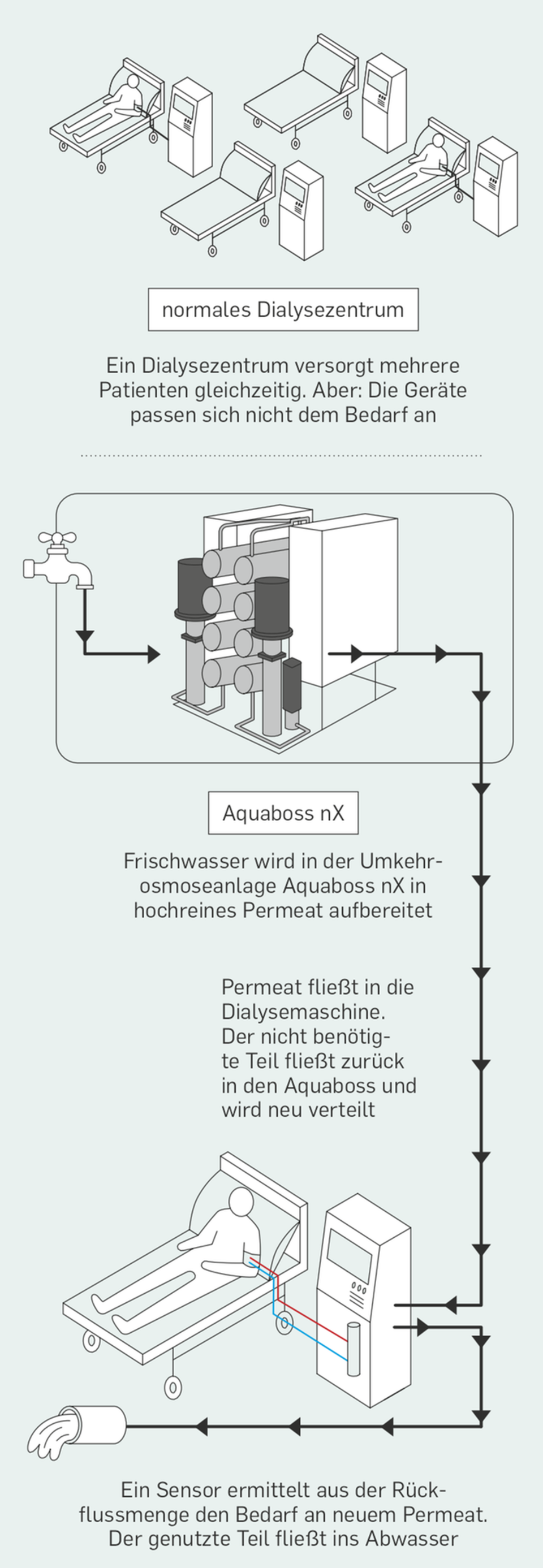Green Revolution: B. Braun dialysis machines use less water and energy

by Capital editorial team
1 minAchieving climate neutrality is a mammoth task. Capital reports on innovations along the way. This time: a water treatment plant that makes dialysis more efficient.
Hardly any other form of therapy is as resource-intensive as dialysis. Its consumption of water and energy is immense. Dialysis requires ultrapure water, known as permeate, to purify the patient's blood. 477 liters of water are needed for each patient. Reverse osmosis systems are used to treat the water—and, like the dialysis machines, are extremely energy-intensive. Each of the approximately 450 dialysis centers in Germany consumes approximately 32 gigawatt hours of electricity per year, equivalent to the consumption of 75,000 households. In addition, each center uses approximately seven million liters of water—equivalent to about three Olympic-sized swimming pools.
innovationConventional reverse osmosis systems have two states: on or off. They therefore don't recognize whether one or 50 patients are being treated simultaneously. The medical technology company B. Braun has developed a dynamic system called "Aquaboss nX." Software monitors the permeate backflow and uses this to determine the necessary water and energy requirements.
In practiceWith the Aquaboss, dialysis centers save up to 95 percent of water and 65 percent of energy compared to conventional systems.
“Efficiency is more important in Europe than in China”Patrick Weix, product manager at B. Braun Avitum
Is there a great need for optimizing reverse osmosis systems? High permeate quality is always a priority. But costs and efficiency are more important in countries with high energy prices, such as Germany and Europe in general, than in China or the USA. Reliability is becoming increasingly important there.
To what extent is this safety? Without the permeate, dialysis would not be possible, which is why it is considered the "heart of dialysis." A dialysis machine may fail, but the Aquaboss water purification system cannot. Therefore, it requires special protection.
Is the technology transferable to other industries? It's already been derived from the findings of our industrial water treatment. Transfers are less possible in medicine due to the many regulations. But it's exciting to see what else we could do with wastewater.
Illustration: Carmen Reina
Published in Capital 7/2025
capital.de





